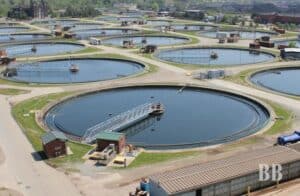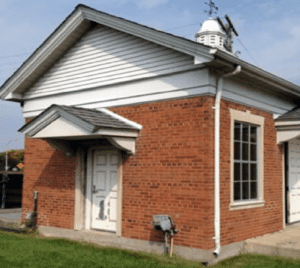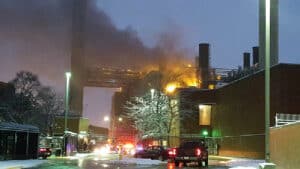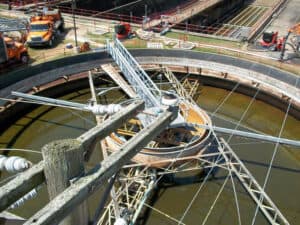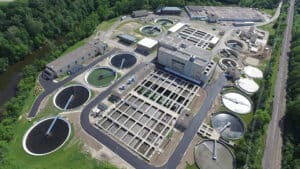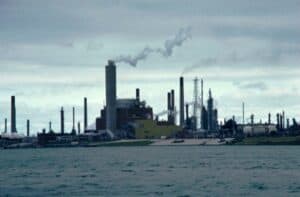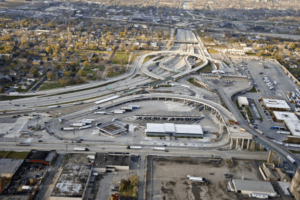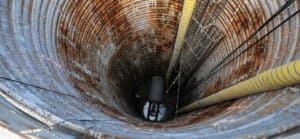GLWA Incinerator Facility Renovation
On March 4, 2016, at approximately 5:30 a.m., a two-alarm fire broke out at the Detroit Wastewater Treatment Plant (WWTP) located on West Jefferson Avenue along the Rouge River in southwest Detroit. The cause of the fire, which started on the fourth floor of Complex II Incineration, was friction created from the large diagonal moving Conveyor Belt H. The belt was rubbing up against semi-solid dewatered sludge that had become wedged throughout the metal frame. Friction heat caused the sludge to ignite while employees were conducting cleanup one floor above.
3-story Tall Conveyor
The large diagonal Conveyor Belt H is four feet wide and several hundred feet long, with a three-story tall incline. The fire severely damaged the belt conveyors feeding Incinerators in the Complex II (C-II) Incineration facility at the Detroit Water Resource Recovery Facility (WRRF). Plant employees immediately contacted Rotor Electric of Michigan, LLC for emergency assistance with the electrical systems issues that resulted from the fire.
Modifications and Rehabilitation
Great Lakes Water Authority (GLWA) issued a request for bids for modifications and rehabilitation of the facility. Over the years, the primary repair had been deferred in anticipation of an alternative biosolids disposal solution to handle all the solids. Hence, the fire moved the project up in priority on the Capital Expenditures list. Contract GLWA-CON-197 Modifications to Incinerator Sludge Feed Systems in Complex II at the WRRF was awarded to Weiss Construction.
Weiss then awarded the electrical contracting to Rotor Electric. Rotor has performed substantial work in GLWA (formerly known as Detroit Water and Sewerage Department – DWSD) facilities over the years. The overall goal of this project is to provide improved sludge conveyance from each dewatering facility along with better operations and maintenance functions.
C-II Incineration Complex
GLWA WRRF has multiple hearth incinerators (MHI) in Complex II (C-II) Incineration. GLWA uses the incineration facility to dry and combust dewatered sludge by thermal conversion into exhaust gas and inert ash. The complex is over 40 years old and has many major equipment pieces nearing the end of their useful life.
Motor Control Centers (MCCs)
The Motor Control Centers (MCCs) at electrical buildings EB 24, EB 25, and EB 26 are over 40 years old and have reached their maximum life service expectancy. Each MCC services critical loads at C-II Incineration, so the need for replacement is vital. The EB-26 Unit Substation at Incinerator C-II is more than 40 years old and has reached the end of its useful service life, requiring rehabilitation to ensure continuous, reliable operation.
Rotor Electric is completing three packages of electrical work at C-II. Package A includes the replacement of conveyors in Sludge Dewatering Complex II and Incineration Complex II at the WRRF. A complete new operational Unit Substation in the 6th Floor Electrical Room (EB-26), including demolition and installation, is Package B’s focus. For Package C, we are replacing a total of nine Motor Control Centers in the complex’s electrical buildings.
913 Calendar Days
The almost $5 million contracts provide for approximately 2-1/2 years to complete the project. Project owners chose June 2020 as the completion date. We work diligently to complete the upgrades and replacements to ensure that the GLWA facility operates efficiently for many more years.
